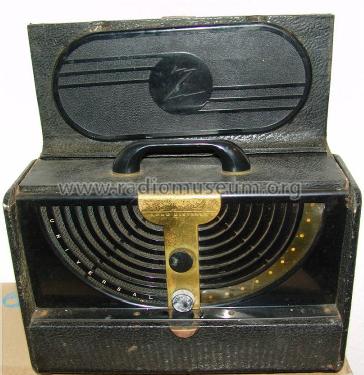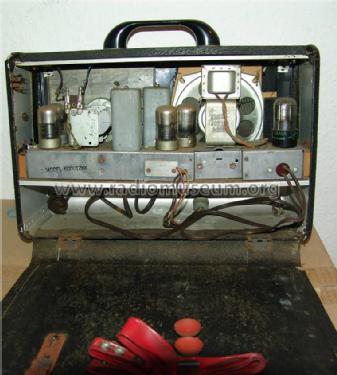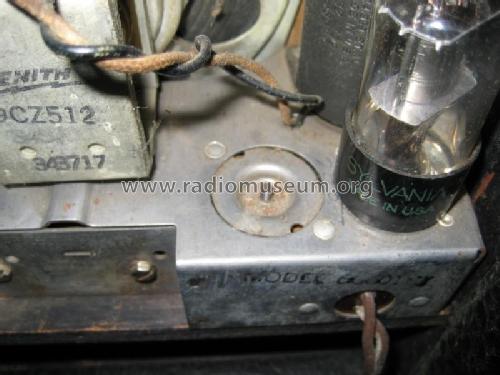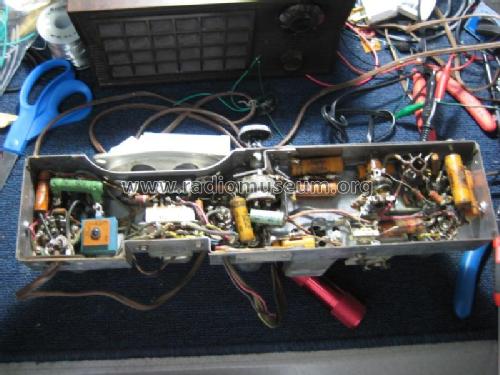6G001ZYX Universal
Zenith Radio Corp.; Chicago, IL
- Produttore / Marca
- Zenith Radio Corp.; Chicago, IL
- Anno
- 1947 ?
- Categoria
- Radio (o sintonizzatore del dopoguerra WW2)
- Radiomuseum.org ID
- 241915
-
- alternative name: Chicago Radio Lab
- Numero di tubi
- 6
- Numero di transistor
- Semiconduttori
- Selenium-Rectifier
- Principio generale
- Supereterodina con stadio RF; ZF/IF 455 kHz
- Gamme d'onda
- Solo onde medie (OM).
- Tensioni di funzionamento
- Rete / Batterie (ogni tipo)
- Altoparlante
- AP magnetodinamico (magnete permanente e bobina mobile)
- Materiali
- Mobile di metallo
- Radiomuseum.org
- Modello: 6G001ZYX Universal - Zenith Radio Corp.; Chicago,
- Forma
- Apparecchio portatile > 20 cm (senza la necessità di una rete)
- Annotazioni
-
Rectifier tube replaced by selenium rectifier.
Attention:
This 6G001ZYX is different from the 6G001YZX. How far they are common is not (yet) known.
- Autore
- Modello inviato da Konrad Birkner † 12.08.2014. Utilizzare "Proponi modifica" per inviare ulteriori dati.
- Altri modelli
-
In questo link sono elencati 4519 modelli, di cui 4111 con immagini e 3656 con schemi.
Elenco delle radio e altri apparecchi della Zenith Radio Corp.; Chicago, IL
Collezioni
Il modello 6G001ZYX Universal fa parte delle collezioni dei seguenti membri.
Discussioni nel forum su questo modello: Zenith Radio Corp.;: 6G001ZYX Universal
Argomenti: 1 | Articoli: 5
Hello Radio Friends,
While going over the chassis of my 6G001YZX this weekend, I noticed something immediately; the lack of a 117Z6 rectifier tube and in its place is a selenium rectifier (SR). The tube socket is replaced with a metal plate, which appears to be factory work, and the SR is bolted to the underside of this plate. The SR is connected to a wire-wound 3 or 5 watt resistor (that is well cooked and the ceramic is broken, but the wire is not) which is connected to the 40 mfd electrolytic (7A). Since the resistor no longer bears any markings, I tested it around 155 ohms. That seems low to me, but I decided to stay in that vicinity and replaced the resistor with a 240 ohm 7 watt resistor. It immediately came back to life, with only the slightest hum (I have changed nothing else, yet), and a small bit of squealing when I adjust the volume (presumably from the SR). After 5 or 6 minutes, the new resistor was still cool enough to touch with my finger.
Is anyone familiar with this set and possibly know if this was something common for Zenith to do by 1946? I did not think selenium rectifiers were widely used on the 1950s?
Any other feedback from the far-more-experienced-group-than-I is also appreciated.
Bob
Bob Isaac, 19.Apr.10




